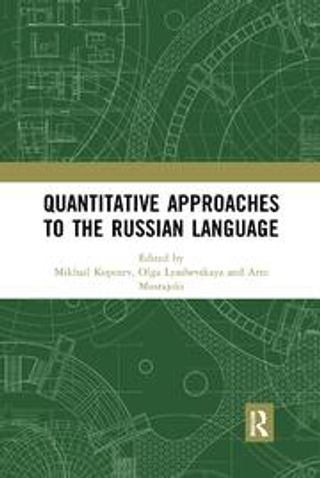?
Quantitative approaches to the Russian language
This edited collection presents a range of methods that can be used to analyse linguistic data quantitatively. A series of case studies of Russian data spanning different aspects of modern linguistics serve as the basis for a discussion of methodological and theoretical issues in linguistic data analysis. The book presents current trends in quantitative linguistics, evaluates methods and presents the advantages and disadvantages of each. The chapters contain introductions to the methods and relevant references for further reading.
The Russian language, despite being one of the most studied in the world, until recently has been little explored quantitatively. After a burst of research activity in the years 1960-1980, quantitative studies of Russian vanished. They are now reappearing in an entirely different context. Today we have large and deeply annotated corpora available for extended quantitative research, such as the Russian National Corpus, ruWac, RuTenTen, to name just a few (websites for these and other resources will be found in a special section in the References). The present volume is intended to fill the lacuna between the available data and the methods that can be applied to studying them.
Our goal is to present current trends in researching Russian quantitative linguistics, to evaluate the research methods vis-à-vis Russian data, and to show both the advantages and the disadvantages of the methods. We especially encouraged our authors to focus on evaluating statistical methods and new models of analysis. New findings concern applicability, evaluation, and the challenges that arise from using quantitative approaches to Russian data.
